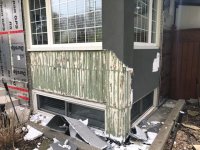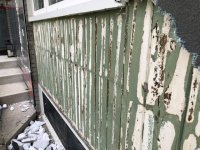Thanks for sending. I looked through it. This isn't an official review (as I am entirely unqualified) just the things I noticed that stood out.
Prepared by a structural engineer working for a structural engineering company.
No lateral capacity. If lateral forces exist, a lateral restraint must be used. I suspect nobody does this.
They do not rely on soil/shaft friction for capacity (good because there wouldn't be much).
Pile capacity is closely related to soil. You must know the makeup prior to installing piles. I suspect nobody does this. The whole point of screw piles is fast and minimally invasive, you aren't digging a pit to look and you sure as hell aren't getting a geotech report.
Standard height of 50" with 1.875" pitch. So about 25 full rotations to install.
6" diameter plate.
Some strange remarks that are probably related to engineer being ESL (eg. Electrical soldering on a drawing).
I think most of my confusion comes from rule of thumb calcs for bearing capacity of poured concrete cylindrical footings. The normal numbers are 2000 psf for sand and 1500 psf for clay. How do the screw piles which rely only on bearing capacity of the helix use a bearing capacity well above 8000 psf? Answer is above my pay grade.
I looked through the pylex catalogs for our local hardware place and there are versions of the screw piles with a lateral restraint welded to the top of the pile. I guess you sledge hammer the last few inches in to set them.



















